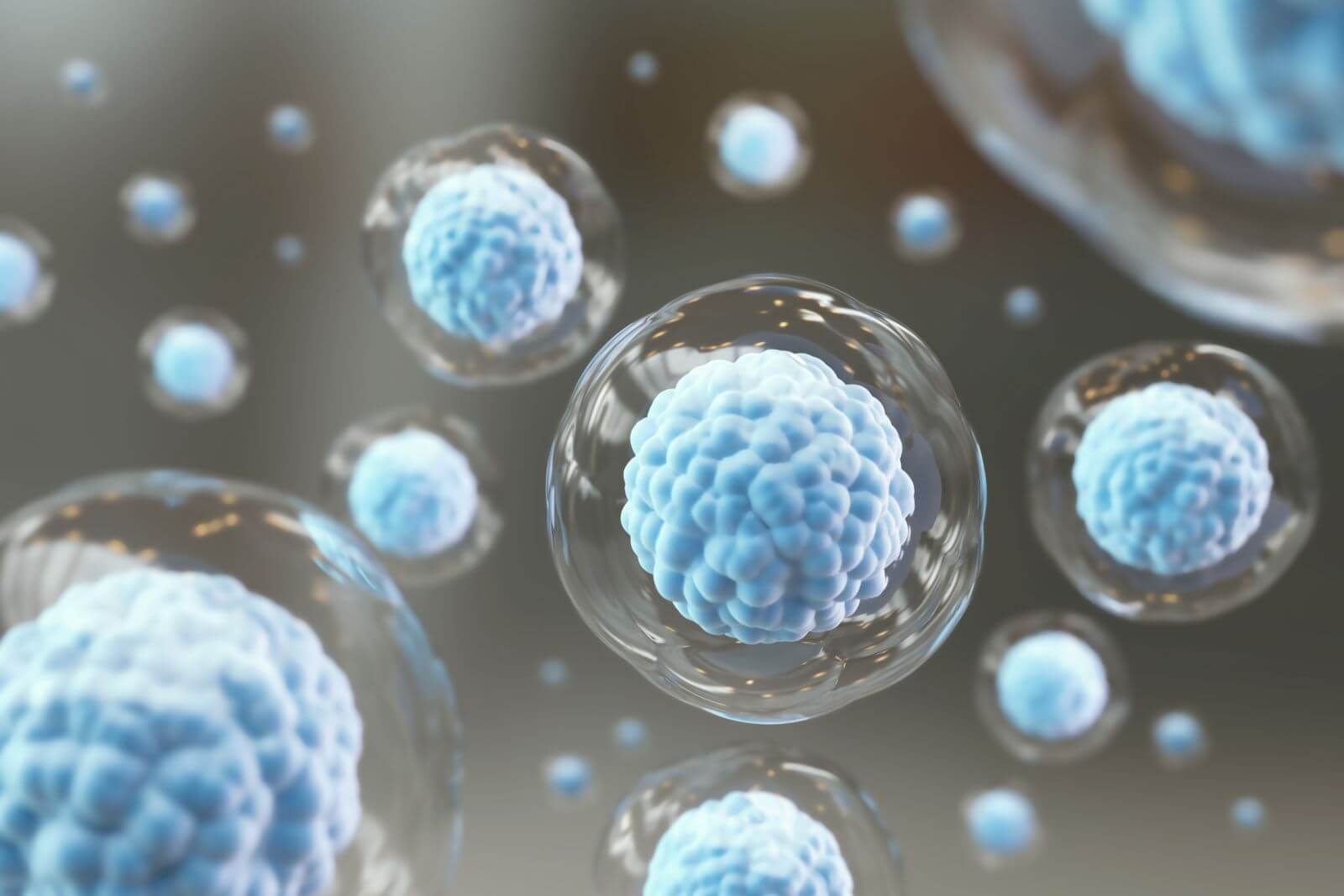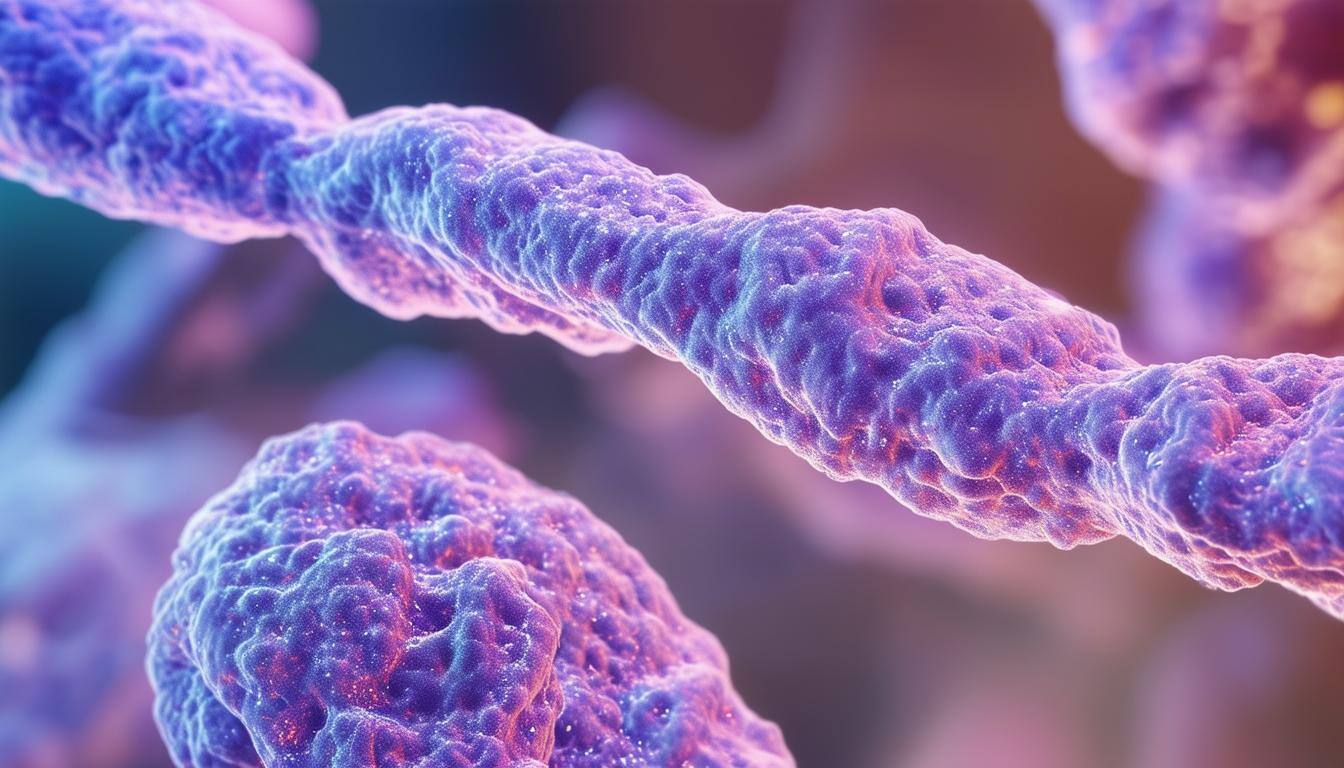- (1) monoclonal antibodies (unique cloning of white blood cells) that target NK-cell immune checkpoints and,
- (2) on adoptive therapy of Natural Killer cells.
In this blog, we will introduce you to the world of Natural Killer cells and explain NK-cell-based immunotherapy, including its advantages and challenges.
What are Natural Killer (NK) cells, where do they come from and how do they function?
In the following section, we will first discuss the origin and development of Natural Killer cells, and then we will delve deeper into the incredible functions of these cells.
Development of Natural Killer cells
Pluripotent hematopoietic stem cells reside in the bone marrow (see figure 1). These cells can develop into any other cell and have the characteristic to renew themselves. Out of these cells, a common lymphoid progenitor (see figure 1) is developed which further differentiates into
- (1) B cells,
- (2) T cells
- and (3) NK cells.

Figure 1 – Hematopoietic stem cell lineage. Adopted from Cell Signaling Technology.
This takes place in the bone marrow or in secondary lymphoid tissues such as the tonsils and the spleen. Those 3 types of cells can migrate through the lymph nodes and become effector cells when activated.
Natural Killer cells express a limited number of receptors in comparison with B and T cells (see figure 1). These NK-specific receptors recognize molecules on the surface of infected cells and cancer cells, which in turn ‘switches on’ the Natural Killer cell.
Another specific characteristic of these cells is that they are not dependent on antigen processing and presentation for their activation. An interaction between the Natural Killer cells and target cells (infected and cancer cells) is enough to activate the process of NK cells. This gained enormous attention in the cancer immunotherapy field.
Function of Natural Killer cells
Natural Killer cells are specialized immune effector cell types that defend against several pathogens (Viruses such as Chlamydia spp., Rickettsia spp., Listeria monocytogenes, and Protozoa) which cause intracellular direct infections (both cytoplasmic as vesicular).
More specifically, Natural Killer cells are activated by interferons (proteins produced and released in response to infection) and destroy virus-infected cells, some tumor cells, and other intracellular pathogens, with their invariant activating and inhibitory receptors.
The function of the NK cell is dependent on the signals from the inhibitory and activating receptors on the surface of the Natural Killer cell. Activating receptors are activated when cancer or infected cell is detected.
In this case, the NK cell is ‘switched on’ to attract other immune proteins and destroy the intruding cells. Inhibitory receptors recognize the Major Histocompatibility Complex I (MHC I) receptors (see Figure 2), which are present in normal, healthy cells.

Figure 2 – NK cell and target cell and their receptors. Adopted from the British Society of Immunology.
This ‘switches off’ the Natural Killer cells which prevents the cells from destroying them. Cytotoxins, which are specialized granules, are produced and released by Natural Killer cells after the recognition of target cells and participate in destroying them.
These well-defined cytotoxins are granzymes, perforins, and granulysins. Granzymes and perforins cause direct lysis of tumor cells. Cytokines activate other immune cells such as Macrophages and Dendritic cells to assist during the immune response.
Role of NK cells in the innate immune response
Natural Killer cells play a crucial role in the innate immune response. In the next section, the specific cytotoxic immune response is explained. Afterwards, the effector immune response is highlighted and in the third subsection, the inhibitory function is outlined.
Cytotoxic Immune Response
This immune response has the goal of eliminating and killing target cells with the use of cytotoxic molecules. In a process called degranulation (see figure 3), those cytotoxic molecules are released according to the following steps:
- An immunological synapse is formed between the NK cell and the target cell. The actin cytoskeleton is reorganized.
- The microtubule-organized center and the secretory lysosomes are polarized towards the lytic synapse.
- The secretory lysosomes are moved towards the plasma membrane of Natural Killer cells. NK cells contain TNF receptor ligands on their surface which induce the process of apoptosis once bound.
- The secretory lysosomes fuse with the plasma membrane (TNF receptors) of the target cells.

Figure 3 – NK cell degranulation process. Adopted from International Journal of Molecular Sciences.
Several proteins, such as lysosomal-associated membrane protein-1 and -2 (LAMP-1 and -2), are expressed on the surface of the Natural Killer cells. Perforin is afterward released by Natural Killer cells which causes polymerization (chainlike network formation of several small molecules called monomers) and formation of pores in the target cells (intruders).
Through these pores, granzymes (serine proteases), can enter easily into the target cells where caspase molecules are activated, and apoptosis (programmed cell death) is induced.
Effector Immune Response
Cytokines are small proteins essential for the control of the growth and activity of blood cells and other immune cells. Various cytokines: interferon-gamma (IFN-γ), tumor necrosis factor-alpha (TNF-α), interleukin-10, -5 and-13 (IL-10, IL-5, and IL-13), and chemokines (family of cytokines): interleukin-8 (IL-8) and macrophage inflammatory protein beta (MIP-1β) are released from activated Natural Killer cells and play a crucial role in antibacterial, antiviral and antitumor activity. They have a crucial role in modulating adaptive immune responses.
Inhibitory action of NK cells prevents the attack of normal cells
Natural Killer cells also express inhibitory receptors which recognize membrane proteins present on normal, healthy cells. This prevents the killing of normal cells and as such eliminating autoimmunity.
NK-cell-based Immunotherapy
The antitumoral characteristics of Natural Killer cells open many opportunities for immunotherapies.
Chimeric Antigen Receptor (CAR) NK Therapy
For better recognition and killing of tumor cells, Natural Killer cells are engineered to express different types of receptors, one of which is the chimeric antigen receptor (CAR).
The unique biological features make the Natural Killer cells a very attractive source for genetically modified immune cell-based immunotherapy.
There are many different targets you can add to Natural Killer cells to either target a very specific type of (tumor)cells/tissues or support the action and survival of the NK cells.
Advantages of CAR-NK cells
The use of CAR-NK cells instead of just “normal” Natural Killer cells in immunotherapy comes with some advantages:
- Clinical trials have proven the safety of NK-cell infusions (also in an allogeneic setting). This is a major advantage compared to CAR-T cells. The risk of toxicity on normal tissues is limited due to the short lifespan of CAR-NK cells. Also, neurotoxicity and cytokine release syndrome (CRS) are less likely to happen.
- CAR dependent & independent killing of cells. CAR-NK cells can eliminate cancer cells in a CAR-dependent (CD16-mediated antibody-dependent cellular cytotoxicity) as in a CAR-independent manner (natural cytotoxic activity, NK cell receptor-dependent).
- Reduced risk for alloreactivity (immune response against allelic variants of molecules). CAR-NK cells can be generated from multiple sources for example, from induced pluripotent stem cells (iPSCs) which can then be produced homogeneous and on a clinically scalable manner. Those cells have shown a proliferative capacity in preclinical testing and a potent anti-tumor activity. This means that companies will start with producing “off-the-shelf” products soon, which eliminates the need to personalized/patient-specific products.
Challenges of immunotherapies based on Natural Killer cells
Despite all the advantages, these new, highly promising NK-cell-based immunotherapies come with multiple challenges:
- Meeting the clinical-grade (in which products are suitable for direct therapeutic use) ex-vivo (outside the body) is difficult
- In-vivo persistence is limited (survival inside body cells is limited)
- Infiltration in solid tumors is limited
- Tumors use immune editing to escape from the immune system/NK cells
To overcome the above-mentioned challenges, various strategies are being employed:
- Ex-vivo preconditioning (exposing) with small molecular drugs and/or cytokines
- Engineering of:
- (1) “off-the-shelf” receptor,
- or (2) iPSC-differentiated chimeric antigen receptor (CAR)-NK
Conclusion: the innate immune system as a very effective therapy
Natural Killer cells, as part of our innate immune system, are very effective in killing different types of cells, including tumor cells. Because of these properties, they become very interesting as ATMPs for immunotherapy.
With antibody engineering, Natural Killer cells can be modified towards the desired target. There are several advantages associated with CAR-NK cells such as safety, dependent and independent killing, and reduced risk of alloreactivity.
Although this technique seems promising, there are some major challenges that need to be overcome. Ex-vivo preconditioning with small molecular drugs/or cytokines and engineering of (1) “off-the-shelf” receptors, or (2) iPSC-differentiated CAR-NK look promising solutions to these challenges.
Do you need help with ATMP-related problems? Do not hesitate to contact our ATMP experts. We’d be happy to assist you!







.png?width=109&height=108&name=Pharma%20(2).png)
.png?width=111&height=108&name=Medical%20Devices%20(2).png)
.png?width=84&height=107&name=IVD%20(2).png)




















.jpg)






















.png)

.jpg)